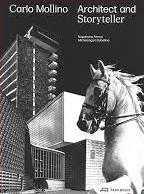ARTE POVERA STORIA E STORIE

Autor/es
- EAN: 9788837075422
- ISBN: 978-88-370-7542-2
- Editorial: ELECTA
- Año de la edición: 2011
- Encuadernación: Rústica
- Medidas: 24 X 22 cm.
- Páginas: 560
- Materias:
italia: arquitectura y arte
arte povera
escultura
nuevas vanguardias, técnicas mixtas, nuevos medios
Sin stock. Envío en 15/30 días
pvp 78,00 €
Starting with the cult book of 1985, this is an updated, detailed account of Arte Povera. For the first time, everything written by Germano Celant about the group of artists comprising Giovanni Anselmo, Alighiero Boetti, Pier Paolo Calzolari, Luciano Fabro, Jannis Kounellis, Mario Merz, Marisa Merz, Giulio Paolini, Pino Pascali, Giuseppe Penone, Michelangelo Pistoletto, Emilio Prini and Gilberto Zorio, for which he himself, in 1967, coined the term 'Arte Povera'. This book is a collection of theoretical texts, focusing on both the art of the movement and the styles of the individual artists, and concentrates as much on the movement's contingent side as on its fragmentary, contradictory, pluralistic way of creating art. But, above all, it is a comprehensive update on his reflections in 1985, the year of the book entitled Arte Povera, Stories and Protagonists, which was written by Celant himself, was never distributed and, since it was only circulated amongst those involved, became a much-sought-after and inaccessible cult item. This book contains a facsimile of the original, providing a source of reference and an opportunity to take a new look at Arte Povera. Since 1967, the language of Arte Povera has brought within its scope water and stone, fire and electricity, words and ideas, and has even involved animals and plants, which take on particular significance because they belong to the primary, essential world. This field of art has always been based on a deconstructive attitude, which takes into account the many different kinds of artistic expression in relation to the context in which it is created. The constant innovation and originality of the Arte Povera movement over the years made it a lasting influence on the Italian contemporary art scene.








